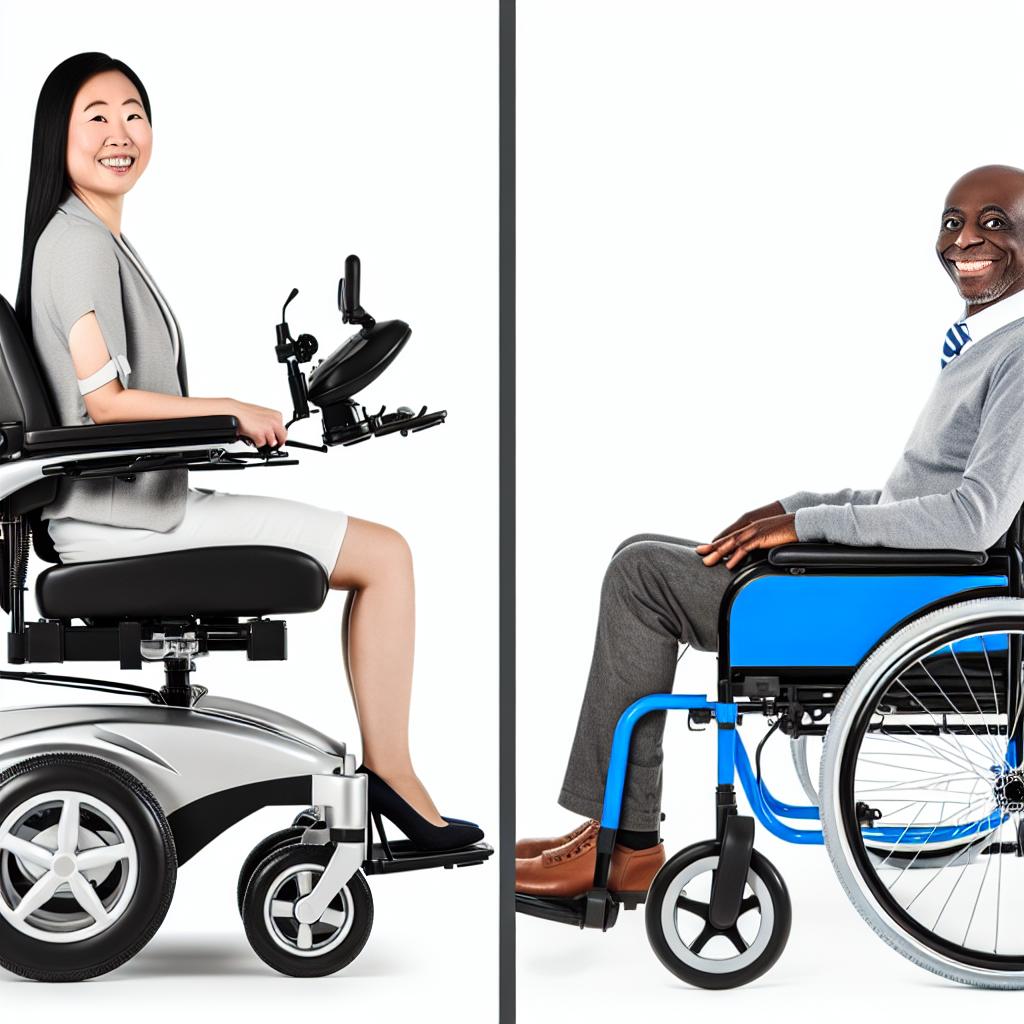Understanding Wheelchair Options
When selecting a wheelchair, individuals often find themselves choosing between power and manual models. Each type of wheelchair offers unique advantages and poses specific challenges. A nuanced understanding of these factors is crucial in making an informed decision. This elaboration aims to shed light on the various facets of power and manual wheelchairs, providing insights that can guide users in choosing the most suitable option based on their specific needs and circumstances.
Power Wheelchairs
Power wheelchairs have revolutionized mobility, particularly benefiting individuals who face challenges in manual wheelchair propulsion. Here are some comprehensive aspects to consider regarding their utility:
Pros of Power Wheelchairs
Convenience: A significant benefit of power wheelchairs is the ease of operation they offer. With the use of a joystick or similar control interface, users who have limited upper body strength can maneuver the wheelchair with minimal effort. This feature enhances not only daily mobility but also supports independence for individuals with diverse physical limitations.
Distance Travel: Power wheelchairs enable users to travel long distances without experiencing the physical fatigue commonly associated with manual propulsion. This address not only daily mobility and errands but also extends to more significant outings and social events, thereby expanding the user’s environment and lifestyle options.
Customization: Power wheelchairs frequently come equipped with customizable features. These include adjustable seating, different speed settings, and electronic control systems tailored to individual needs. Such specifications allow users to personalize the wheelchair according to comfort and necessity, significantly enhancing the user experience.
Cons of Power Wheelchairs
Cost: One of the primary drawbacks of power wheelchairs is their cost. They are generally more expensive than manual wheelchairs, not only in terms of the initial purchase price but also considering potential costs related to maintenance and repairs. This could be a considerable factor for users with constrained budgets.
Weight and Size: The design of power wheelchairs often results in greater weight and bulkiness compared to manual models. This can pose challenges regarding transportation, storage, and maneuverability, particularly in tight or cluttered spaces. Users must ensure that their living environments are compatible with such requirements.
Battery Dependency: Another factor to consider is the reliance on battery power. Regular charging is essential, as an unexpected depletion can interrupt the user’s schedule and potentially leave them stranded. Users must incorporate routine checks and maintenance of the wheelchair’s power system into their habits to avoid inconvenience.
Manual Wheelchairs
Manual wheelchairs remain widely used due to their functionality and pragmatic design. Various aspects make these wheelchairs a viable option for users across different needs.
Pros of Manual Wheelchairs
Affordability: The lower cost of manual wheelchairs is a compelling aspect, making them more accessible to a broader population. This cost-effectiveness can be particularly advantageous for individuals without insurance or those with limited financial resources.
Portability: Manual wheelchairs are typically lightweight and feature foldable designs, facilitating easy transport and storage. This can be particularly beneficial for users who frequently travel or need to move the wheelchair between various environments such as homes, vehicles, and office spaces.
Independence: Regular use of a manual wheelchair can help users develop and maintain upper body strength over time. This aspect not only aids in propelling the wheelchair more effectively but also contributes to better overall physical health, providing users with a sense of empowerment and self-sufficiency.
Cons of Manual Wheelchairs
Physical Demand: The primary limitation of manual wheelchairs is the physical effort required for self-propulsion. Users need substantial upper body strength and endurance to navigate various environments. This can be challenging for individuals with limited strength or those experiencing fatigue from extended use.
Limited Terrain Adaptability: Manual wheelchairs are often less adaptable to uneven or steep surfaces, imposing constraints on where they can be used effectively. This can limit the user’s ability to access certain public spaces or take part in outdoor activities, potentially impacting their lifestyle and autonomy.
Fewer Customization Options: Compared to their power counterparts, manual wheelchairs generally offer fewer options for customization. This can limit the user’s ability to adjust the wheelchair for maximum comfort and efficiency, particularly for those with specific needs or medical conditions requiring specialized designs.
Making the Right Choice
Selecting between power and manual wheelchairs necessitates a careful evaluation of various factors, including personal needs, lifestyle preferences, and physical capabilities. For individuals whose priorities lean towards convenience, greater range, and enhanced features, power wheelchairs may offer the most appropriate solution. On the other hand, manual wheelchairs could suit those who value economic considerations, ease of transport, and the physical benefits of manual operation.
When deliberating on this choice, it is essential to consider the environments in which the wheelchair will most frequently be used, the user’s daily activities, and the potential for transport or storage challenges. Additionally, the financial implications of both options must be factored into the decision-making process, particularly regarding initial costs and ongoing maintenance requirements.
Furthermore, prospective buyers are encouraged to engage with mobility product experts and suppliers. Many reputable providers offer detailed consultations and demonstrate various models, providing in-depth understanding of each wheelchair’s capabilities and limitations. For those seeking comprehensive information on specific wheelchair models and features, visiting the websites of reputable mobility product suppliers can be beneficial. Engaging with these resources equips users with a thorough understanding, facilitating an informed and confident decision in selecting the most suitable wheelchair tailored to their unique circumstances.
